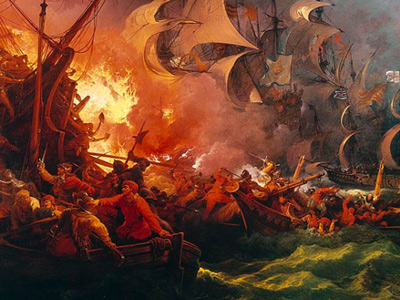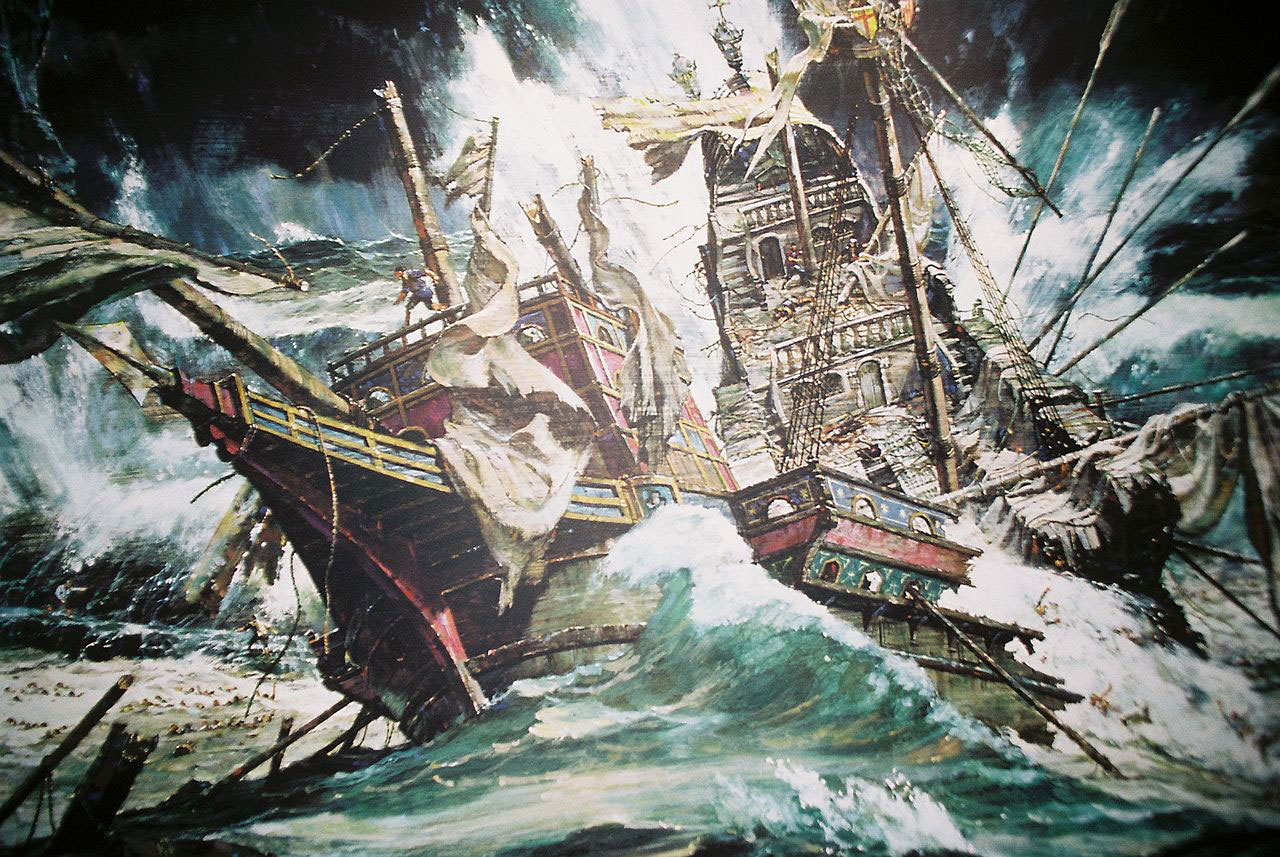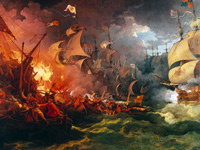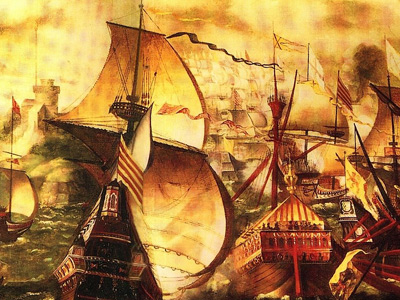Spanish Armada (1588)

Return to Spain
In September 1588 the Armada sailed around Scotland and Ireland into the North Atlantic. The ships were beginning to show wear from the long voyage, and some were kept together by having their hulls bundled up with cables. Supplies of food and water ran short. The intention would have been to keep well to the west of the coast of Scotland and Ireland, in the relative safety of the open sea. However, there being at that time no way of accurately measuring longitude, the Spanish The Spanish Empire was a colonial empire governed by Spain and its predecessor states between 1492 and 1976. One of the largest empires in history, it was the first to usher the European Age of Discovery and achieve a global scale, controlling vast territory. It was one of the most powerful empires of the early modern period, reaching its maximum extent in the 18th century. were not aware that the Gulf Stream was carrying them north and east as they tried to move west, and they eventually turned south much further to the east than planned, a devastating navigational error. Off the coasts of Scotland and Ireland the fleet ran into a series of powerful westerly winds, which drove many of the damaged ships further towards the lee shore. Because so many anchors had been abandoned during the escape from the English
The Spanish Empire was a colonial empire governed by Spain and its predecessor states between 1492 and 1976. One of the largest empires in history, it was the first to usher the European Age of Discovery and achieve a global scale, controlling vast territory. It was one of the most powerful empires of the early modern period, reaching its maximum extent in the 18th century. were not aware that the Gulf Stream was carrying them north and east as they tried to move west, and they eventually turned south much further to the east than planned, a devastating navigational error. Off the coasts of Scotland and Ireland the fleet ran into a series of powerful westerly winds, which drove many of the damaged ships further towards the lee shore. Because so many anchors had been abandoned during the escape from the English The Kingdom of England was a sovereign state on the island of Great Britain from about 927, when it emerged from various Anglo-Saxon kingdoms, until 1 May 1707, when it united with Scotland to form the Kingdom of Great Britain. The Viking invasions of the 9th century upset the balance of power between the English kingdoms, and native Anglo-Saxon life in general. The English lands were unified in the 10th century in a reconquest completed by King Æthelstan in 927. fireships off Calais, many of the ships were incapable of securing shelter as they reached the coast of Ireland and were driven onto the rocks. Local inhabitants looted the ships. The late 16th century, and especially 1588, was marked by unusually strong North Atlantic storms, perhaps associated with a high accumulation of polar ice off the coast of Greenland, a characteristic phenomenon of the "Little Ice Age". As a result, more ships and sailors were lost to cold and stormy weather than in direct combat.
The Kingdom of England was a sovereign state on the island of Great Britain from about 927, when it emerged from various Anglo-Saxon kingdoms, until 1 May 1707, when it united with Scotland to form the Kingdom of Great Britain. The Viking invasions of the 9th century upset the balance of power between the English kingdoms, and native Anglo-Saxon life in general. The English lands were unified in the 10th century in a reconquest completed by King Æthelstan in 927. fireships off Calais, many of the ships were incapable of securing shelter as they reached the coast of Ireland and were driven onto the rocks. Local inhabitants looted the ships. The late 16th century, and especially 1588, was marked by unusually strong North Atlantic storms, perhaps associated with a high accumulation of polar ice off the coast of Greenland, a characteristic phenomenon of the "Little Ice Age". As a result, more ships and sailors were lost to cold and stormy weather than in direct combat.

The wrecking of Girona

The wrecking of Girona
( Click image to enlarge)
Following the gales it is reckoned that 5,000 men died, by drowning, starvation and slaughter at the hands of English forces after they were driven ashore in Ireland. Reports of the passage of the remnants of the Spanish Armada around Ireland abound with onerous accounts of hardships and survival.
In the end, 67 ships and fewer than 10,000 men survived. Many of the men were near death from disease, as the conditions were very cramped and most of the ships ran out of food and water. Many more later died in Spain, or on hospital ships in Spanish harbours, from diseases contracted during the voyage. It was reported that when Philip II learned of the result of the expedition, he declared, "I sent the Armada against men, not God's winds and waves".
HISTORY

RESOURCES
This article uses material from the Wikipedia article "Spanish Armada", which is released under the Creative Commons Attribution-Share-Alike License 3.0.
© Stories Preschool. All Rights Reserved.









